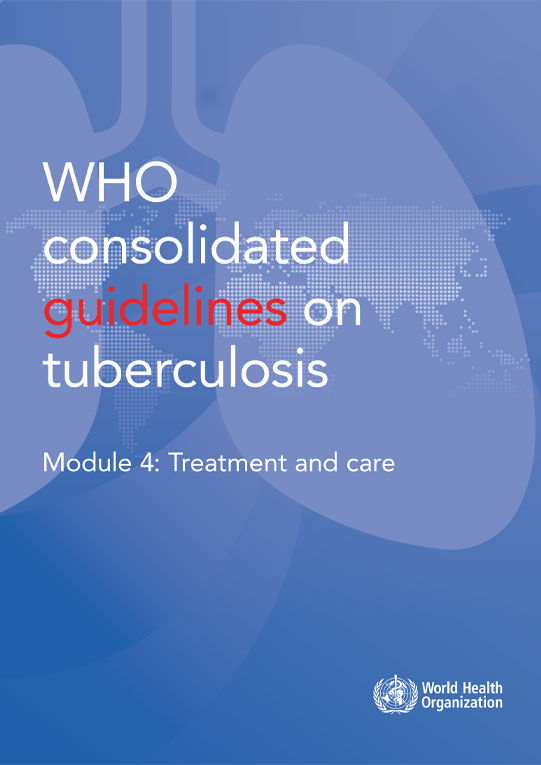Treatment
Executive summary
The Global Programme on Tuberculosis & Lung Health of the World Health Organization (WHO/GTB) is now combining all current recommendations into one overall set of consolidated guidelines on TB. The guidelines contain recommendations pertaining to all areas related to the programmatic management of TB (e.g. screening, preventive treatment, diagnostics, patient support, and the treatment of drug-susceptible TB and DR-TB). The consolidated guidelines contain modules specific to each programmatic area.
Definitions
Bacteriologically confirmed: when a biological specimen is positive by smear microscopy, culture or a rapid diagnostic test for tuberculosis (TB) recommended by the World Health Organization (WHO).
Clinically diagnosed: when a person who does not fulfil the criteria for bacteriological confirmation has been diagnosed with TB disease by a medical practitioner who has decided to give the person a full course of TB treatment.
Key updates to the treatment of drug-resistant tuberculosis: rapid communication, June 2024
Background
Tuberculosis (TB) remains a threat to global public health and is one of the topmost infectious causes of death in the world. In 2022, an estimated 10.6 million people developed TB, and 1.3 million died from the disease. About 410,000 new cases of multidrug-resistant¹ or rifampicin-resistant tuberculosis (MDR/RR-TB) were estimated to occur in 2022. While all of these would have been eligible for a second-line TB treatment regimen, only 175,650 enrolments on treatment were reported by countries in the same year.
Web annexes
Web annex 1
Clinical outcomes and pharmacokinetics of first-line drugs (rifampicin, isoniazid, ethambutol and pyrazinamide) in children (aged <18 years) treated for drug-susceptible tuberculosis: systematic review and meta-analysis.
Click here to view pdf
2.2 Care and support during TB treatment
All treatment delivered should align with WHO-recommended standards, including patient-centred care and support, informed consent where necessary, principles of good clinical practice, and regular patient monitoring to assess regimen effectiveness and patient safety (1). Clinical monitoring of people on treatment is important, and this handbook includes information on both treatment monitoring and the usefulness of post-treatment follow-up for special cases (e.g. long-term complications of TB or TB sequelae).
Pagination
- Page 1
- Next page

 Feedback
Feedback


